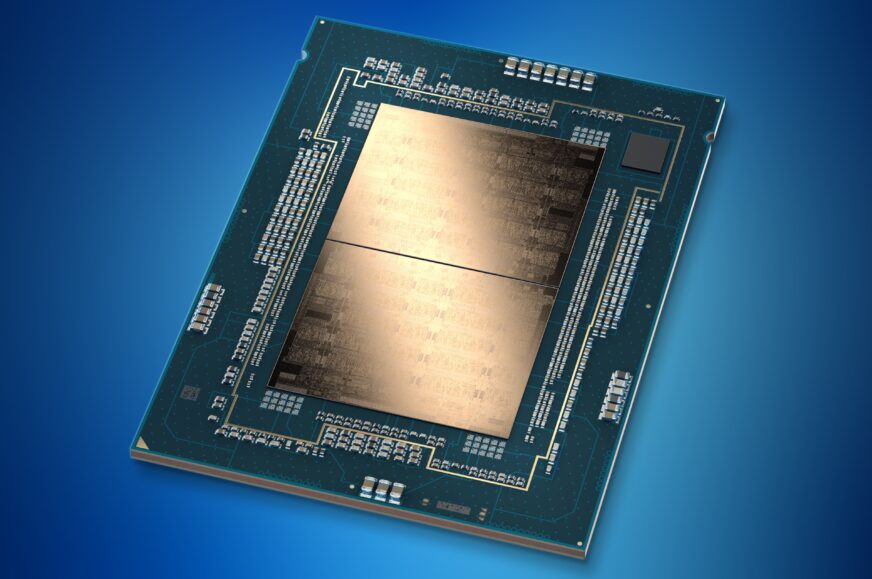Huge core-count jump incoming?
When Intel released the long-awaited Arrow Lake processors last fall, the core count remained at 24 (8 large P-Cores and 16 smaller, efficient E-Cores), the same configuration as used by the Raptor Lake processors from 2022. There were rumors about a future upgrade to 8+32 cores, but that was axed. However, the next-generation Nova Lake in 2026 could make up for this and deliver a significant leap in PC processor performance.
Before continuing, it’s worth recapping Intel’s official plans for its processors. Later this year (in the second half of 2025), Intel will release the Core Ultra 300 series, codenamed “Panther Lake”, which will introduce a 1.8nm manufacturing process node using Intel’s own Intel 18A technology. However, these chips will be exclusive to laptops and won’t be available for the desktop LGA 1851 platform. Desktop users will have to wait until 2026 for the next generation, the Core Ultra 400 series, which date Intel has recently confirmed in its financial reports. This generation, known as Nova Lake, is now the subject of fresh leaked information.
What to Expect from Nova Lake Processors
A Reddit user going by the name Exist50, who appears to have inside knowledge from Intel, has shared details about Nova Lake’s configuration. While these are unconfirmed leaks and should be taken with some skepticism, the information is quite interesting.
According to this source, Nova Lake (NVL) will feature multiple CPU (compute) tile variants, maintaining the tile-based design seen in Meteor Lake and Arrow Lake. The base CPU tile variant, which will cover most laptop models, will have a 4+8 core configuration–four P-Cores and eight E-Cores. This matches the configuration of Panther Lake (which is laptop-exclusive as said), meaning this base variant of Nova Lake will likely have a similar architectural floorplan but with newer cores that are expected to support APX and AVX10 instructions, among other things.
Tip: APX and AVX10 in two years? Intel to introduce them in Nova Lake
Alongside the 4+8 compute tile, there will also be a more powerful CPU tile for higher-end models, much like how Raptor Lake and Arrow Lake feature a higher-performance silicon variant with an 8+16 core configuration. According to Exist50, this chiplet will likely be used in high-performance laptop processors and possibly in lower-end (potentially 65W) desktop versions of Nova Lake.
However, the most significant revelation is that Nova Lake will also feature a version of these processors that incorporates two of these high-performance CPU tiles instead of just one. This would be a similar leap to what AMD achieved with Zen 2–in an approach that all the company’s subsequent generations have continued–which introduced processors with two CPU chiplets, offering 12 and 16 cores in addition to the standard 6–8 core processors. Since 2019, Ryzen’s success has largely capitalised on these dual-chiplet processors, although strong single-threaded performance and later innovations like 3D V-Cache in gaming CPUs also played key roles. Nova Lake could potentially follow a similar path.
Double the cores in higher-end models, but exact numbers remain uncertain
According to Exist50, these dual-chiplet models will be available at least in desktop (enthusiast K-series) processors, while the lower mainstream desktop lineup might stick to single compute tile configurations with half the maximum core count. However, this may be just a conjecture. It’s also reasonable to expect that Intel’s highest-end HX notebook series might adopt a similar multi-core configuration as the high performance desktop processors with two CPU chiplets. Likewise, the mainstream S-series–which may lack overclocking capabilities, but is still positioned at a similar price point to enthusiast models–could also include dual-tile variants, as this segment is crucial for the OEM market, where Intel would likely want to offer CPUs with such a major performance leap.
Many media outlets have interpreted this leak to mean that Nova Lake will feature up to 48 cores, as Exist50 used an example where the high-performance Nova Lake CPU chiplet would follow the same 8+16 configuration as Raptor Lake or Arrow Lake. Under this assumption, a dual-chiplet model would provide 16 high-performance P-Cores and 32 efficient E-Cores.
However, it’s important to note that Exist50 likely only used this as an example rather than confirming that the second, more powerful tile being prepared will indeed follow this 8+16 core layout. The exact core count for this chiplet remains uncertain. If Intel is designing it with the dual-tile configuration in mind, it may not necessarily feature a full doubling of the smaller chiplet. A more plausible approach could be a configuration with 6 P-Cores and 16 E-Cores, or even just 4 P-Cores and 16 E-Cores, which would maintain the current eight P-Core count. The widely circulated 16+32 core count should not be taken as a final figure–the key new information here is that a dual-chiplet configuration will exist at all.

Potential for extreme performance, but also power consumption
AMD has stuck with 8-core (16-thread) CPU chiplets in Zen 2, 3, and 4 generations–and now even with Zen 5–meaning that even its most powerful dual-chiplet processors top out at 16 cores and 32 threads. It’s still unclear whether Zen 6 will increase core counts, though there is speculation about 12-core chiplets circulating, which could push flagship Ryzen models to 24 cores and 48 threads. However, if AMD sticks to 16 cores, Intel’s dual-chiplet Nova Lake processors, potentially featuring 40–50 threads, could significantly outperform future Ryzens in multi-threaded workloads.
One of the biggest unknowns is power consumption. Doubling the core count doesn’t necessarily mean doubling TDP or power draw, as these factors depend purely on what the manufacturer chooses to limit the processor to. Intel could choose to maintain the current same power limits, running the increased core count at lower clock speeds, in a more efficient operating range on the voltage-frequency curve. This approach would still yield substantial performance scaling, even if there wouldn’t be a full 2× increase. However, Intel has a history of prioritizing raw performance gains by increasing power consumption, so it’s possible that Nova Lake will follow a this path too.
The same SoC chiplet for laptops and desktops. Including LP E-Cores
It is also worth noting that Nova Lake will include additional low-power E-Cores in its SoC chiplet, similar to Meteor Lake and the newer Arrow Lake-H for laptops. These LP E-Cores are designed to improve battery life and efficiently handle low-power workloads, and Nova Lake is expected to feature four of them. Therefore, if the scenario of the highest-end desktop Nova Lake featuring two 8+16 chiplets comes true, the total core/thread count would actually reach 52. However, LP E-Cores are not fully equivalent to standard cores in multi-threaded applications. If Intel instead opts for two 6+16 chiplets, the processor would have a total of 48 cores.
According to Exist50, the SoC tiles, which likely houses memory controllers, connectivity, multimedia accelerators, an NPU, and the LP E-Cores, is shared between both desktop and notebook versions of Nova Lake. On the one hand, this creates the potential for all the power-saving optimizations and technologies to make their way into the desktop version of Nova Lake, on the other hand, it may mean higher performance potential for the laptop version (which can also theoretically have two CPU tiles, since the SoC tile will be provisioned for such SKUs). Provided Intel manages to bring these things together without one compromising the other instead of helping it.
Intel Core Ultra 9 285K: #1 in multi-threaded tasks even without HT
The year 2026, 2nm process node
As previously mentioned, these processors are expected to launch in the second half of 2026, two years after the current Core Ultra 200 “Arrow Lake” series. This means they are still relatively far from release. According to earlier reports, the CPU chiplets will likely be manufactured using TSMC’s 2nm process node, suggesting that Intel considers it more advanced or efficient than its own 1.8nm technology. The numbering of the 20A and 18A process nodes is probably a bit “ahead” of the parameters.
Sources: VideoCardz, PCGamesN, Reddit
English translation and edit by Jozef Dudáš
⠀
- Contents
- Huge core-count jump incoming?








